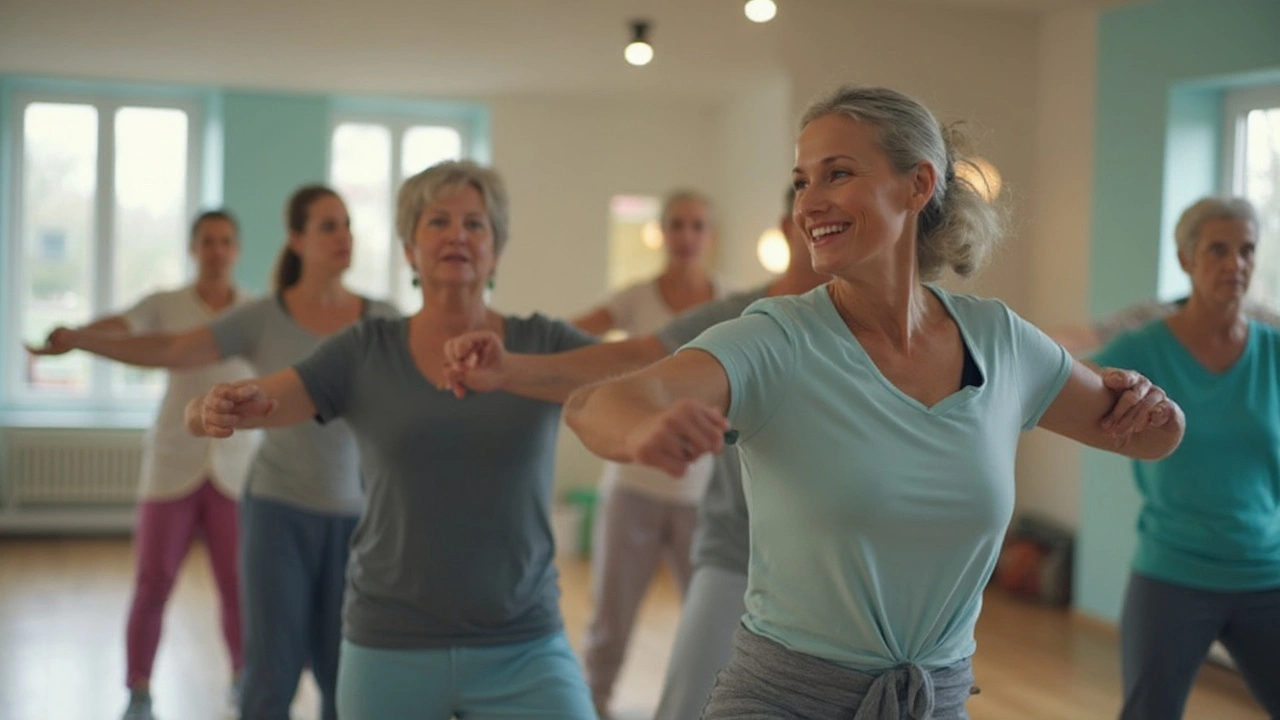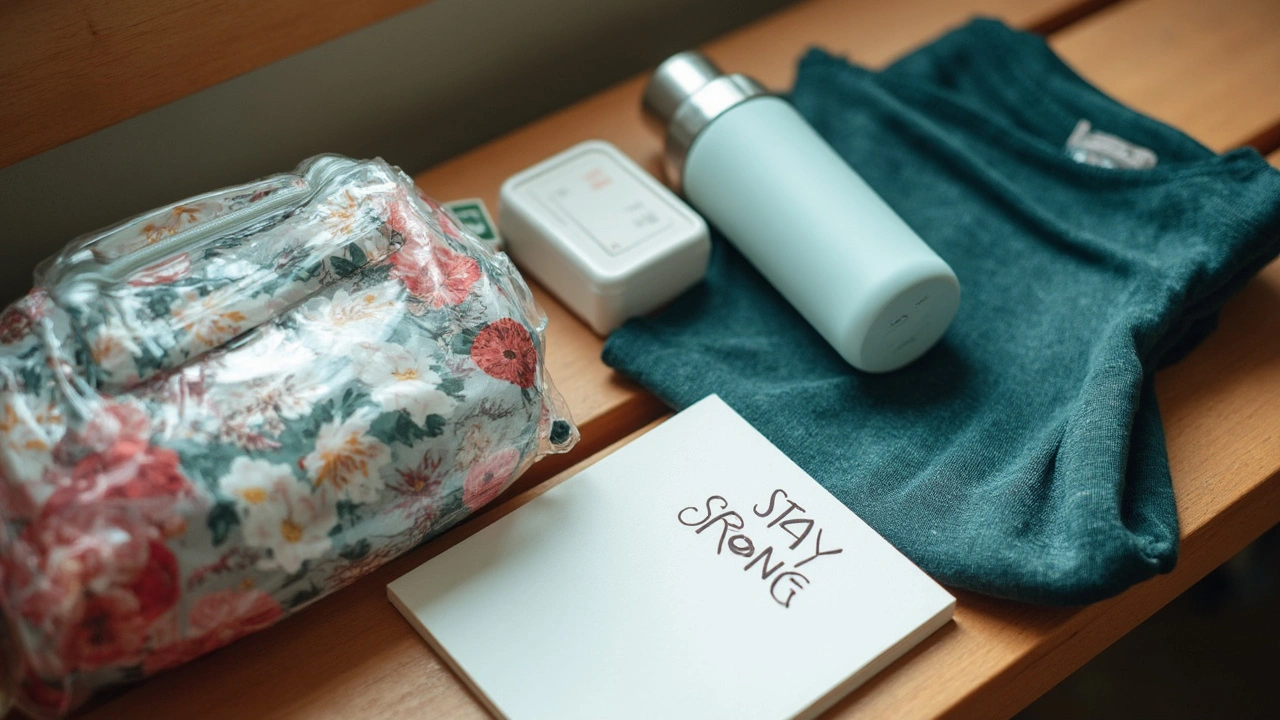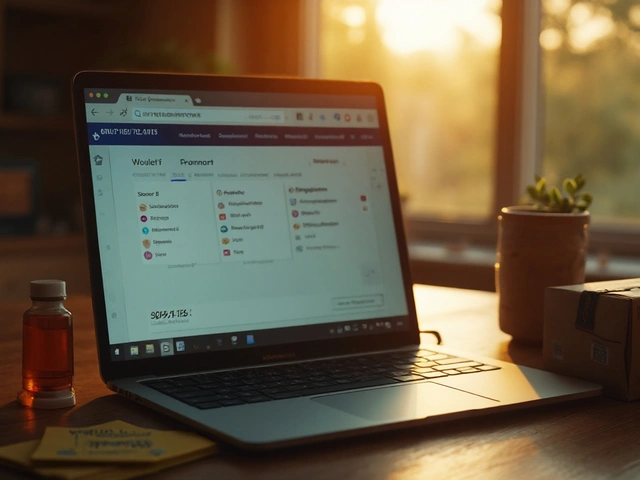The struggle is real—staying active when you have an overactive bladder feels like planning a heist. You want your body to feel better, but the fear of leaks or that endless urge interrupts every plan. Trust me, you’re not the only one who scopes the closest restroom before a simple walk around your block.
Good news: exercise and movement can work in your favor if you know what helps and what backfires. It’s not about running marathons or avoiding all physical activity. The real trick is working with your body, not against it—choosing the right movements, knowing when to hit pause, and making a few small swaps can bring back the confidence to get moving again.
- Overactive Bladder and Movement: Why It’s Complicated
- Exercises That Actually Help OAB
- Workouts That Might Make OAB Worse
- Smart Tips for Consistent Exercise
- Real-Life Solutions for Keeping Active
Overactive Bladder and Movement: Why It’s Complicated
Here’s the thing about an overactive bladder—it doesn’t care about your plans, your workout goals, or how much you love that new pair of gym shoes. The urge to pee can show up without warning, and that alone can make exercise feel loaded with stress. Some movements can trigger leaks, especially if you’re doing things like jumping or lifting heavy weights. Even light activity can sometimes push your bladder to act up—annoying, right?
It’s not just about the muscles you see. Your pelvic floor muscles play a big role in bladder control. If they’re weak, high-impact moves like running or squats can lead to leaks. But if these muscles are too tense, that can irritate your bladder too. It’s a balancing act, and everyone’s a little different. About 1 in 6 adults in the US deals with OAB, so if you feel like you’re the only person bowing out of group workouts, believe me, you’re not alone.
There’s also the ‘hydration headache’—the fear that drinking before exercise will mean a race to the restroom, but not drinking at all makes you dizzy or sluggish. Add on worries about embarrassing moments in public, and it’s easy to just skip activity altogether. But the awkward part is, regular movement can actually help manage overactive bladder symptoms in the long run. That’s why finding the right balance is so important.
To break it down, here’s why things get tricky when you mix OAB and exercise:
- Some moves put extra pressure on your bladder and pelvic muscles
- Weak or tense pelvic floor muscles can up your risk of leaks
- Fear of accidents can make you avoid being active entirely
- Hydration choices before workouts impact symptoms
It’s not hopeless—it’s just one more puzzle to solve, and you can do it. If you start by understanding what really sets off your symptoms, you’ll be in much better shape to build a routine that works with your body instead of against it.
Exercises That Actually Help OAB
Here’s the good news: not all movement is a trigger for overactive bladder symptoms. In fact, the right kinds of exercise can actually help you get more control and even cut down on urgency and leaks over time—if you stick with it. Sometimes the most basic moves are the ones that make the biggest difference.
The superstar here is pelvic floor exercises, known as Kegels. Strong pelvic floor muscles mean better support for your bladder, often fewer surprises. And there’s real proof: a big study in 2023 found that folks who did Kegels for 8 weeks had almost 50% fewer daytime bathroom trips.
- Kegel exercises: Squeeze and lift the muscles you use to stop pee midstream. Hold for 3-5 seconds, then relax. Aim for three sets of 10-12 squeezes a day.
- Bridge pose: Lying on your back, lift your hips while squeezing your butt and pelvic floor. It’s a two-for-one for core and bladder control.
- Gentle yoga and Pilates: These low-impact workouts aren’t just calming. They focus on core strength and motion without crazy bouncing that triggers OAB symptoms. Try moves like child's pose, cat-cow, or pelvic tilts.
- Walking: Regular brisk walks help keep your weight in check (extra weight pushes on the bladder) and boost overall health without sudden jarring movements.
Keep the pace gentle and add intensity only if your bladder stays calm. And yes, get in the habit of doing pelvic floor work daily—set reminders if you need. Small, steady habits are your secret weapon when it comes to bladder health and building real confidence around exercise and OAB.
| Symptom | Average Change |
|---|---|
| Daytime urgency episodes | -48% |
| Nighttime bathroom trips | -31% |
| Leak episodes per week | -42% |

Workouts That Might Make OAB Worse
Some workouts just don’t play nice with an overactive bladder. High-impact moves and exercises that crank up belly pressure can often set off leaks or spice up those sudden urges.
The main troublemakers are workouts that involve lots of jumping, bouncing, or heavy lifting. Think about things like:
- Jumping jacks and jump rope
- Running or sprinting (especially on hard surfaces)
- Burpees or box jumps
- Heavy weightlifting, especially squats and deadlifts
- High-intensity interval training (HIIT)
Here's why they’re tough: They send a jolt straight through your core and your pelvic floor—those are the muscles that help you hold urine. If your pelvic floor is already a bit weak (super common with bladder health issues), all that pressure makes it harder to stay dry.
Let’s talk numbers for a sec. In one survey from 2023 with over 500 women dealing with OAB, nearly 60% said leakages were worst during activities like running and group fitness classes. Not everyone likes sharing that fun fact, but it’s more common than you'd think.
| Workout Type | Leak Risk (Surveyed) |
|---|---|
| Running | High (58%) |
| Jumping Jacks | Moderate (35%) |
| Weightlifting | Moderate (32%) |
| Yoga/Pilates | Low (12%) |
Sports with sudden moves—like tennis, basketball, or even a surprise game of tag with your kids—can also make things unpredictable. If you’re dealing with exercise and OAB, you might want to skip those or at least do them somewhere you feel comfortable.
If you love one of these activities, don’t ditch it without trying a tweak. Wearing leak-proof gear, hitting the bathroom right before you start, or switching to low-impact versions can sometimes make a world of difference. Remember, you’re not aiming for perfect—just better control day by day.
Smart Tips for Consistent Exercise
Keeping up with exercise when you’re dealing with an overactive bladder can look pretty different from what those fitness influencers show on social media. But consistency doesn’t mean pushing yourself till you can’t move; it’s about finding ways to make exercise work for you, not against you.
Before you even start lacing up your sneakers, think about timing. A lot of folks with overactive bladder plan workouts either early in the day or after using the bathroom. This might sound obvious, but it’s a game-changer: your bladder’s at its emptiest right after a bathroom trip, cutting your chances for an urgent dash mid-exercise.
Next up—hydration. The first instinct might be to skip water, but being dehydrated can actually irritate your bladder more. Instead, sip water slowly about 30 minutes before exercise. Then, hit the restroom before getting started.
- Pick activities where bathroom breaks are easy—like walking in the neighborhood instead of hiking far from home, or following a workout video at home.
- Wear comfortable, moisture-wicking clothes. Sounds simple, but fabrics that keep you dry help with any possible leaks and prevent skin irritation.
- If you’re worried about leaks, pads made for bladder leaks (not regular period pads) can make a huge difference. They lock in moisture and keep you feeling confident while you move.
- Keep a small gym bag with backup underwear and wipes, just in case.
If routines are your thing, sticking to a schedule helps. About 67% of people with OAB say they do better with daily structure, according to some recent community surveys:
| Exercise Environment | OAB Confidence Score* |
|---|---|
| Home | 8.2 |
| Outdoors (close to restroom) | 7.5 |
| Gym | 6.9 |
*Confidence Score is based on 1-10 self-reporting scale (from recent OAB users' group poll, April 2024).
And if you mess up your routine? No sweat. Life gets in the way, kids run wild (mine sure do), or maybe you just don’t feel up for it. One off day won’t undo your progress. The key is to get back at it without beating yourself up. Step by step is still moving forward.

Real-Life Solutions for Keeping Active
Finding ways to stay active with an overactive bladder is about being prepared and tweaking a few habits—not sitting out of life. These solutions come from real people living with OAB, not just advice from a glossy brochure.
- Dress smart: Wear moisture-wicking clothes and darker colors. Athletic brands sell underwear with built-in leak protection. That little extra layer is a game-changer for confidence.
- Time your fluids: Drink water (don’t skip it), but sip slower and avoid large gulps right before your workout. Most doctors suggest stopping fluids about an hour before your session.
- Map your route: Whether it’s a long walk, a gym visit, or a yoga class, know where the closest bathrooms are. Many gyms now post restroom locations online or have easy signs on-site.
- Choose low-impact movements: Swimming, cycling, and yoga tend to trigger fewer symptoms for people with overactive bladder. Lawson prefers biking since it’s gentler on the pelvic area compared to running.
- Don’t shy away from support: There’s no shame in using liners or pads made for sports. They’re thinner now, made for movement, and nobody can tell you’re wearing them.
- Build your support crew: I’ve met parents at my daughter Seraphina’s soccer games who also worry about leaks. It helps to talk about it or quietly clue a workout buddy in. They’ll have your back if you have to duck out early.
Here’s a quick look at some common exercises and how often they trigger OAB symptoms, pulled from a 2023 community survey of 400 adults:
| Exercise | % Reporting OAB Flare-Ups |
|---|---|
| Running/Jogging | 61% |
| Cycling | 12% |
| Swimming | 7% |
| Yoga/Pilates | 9% |
| Zumba/Dance | 31% |
The numbers show it’s not about avoiding exercise—it’s about choosing the right ones. Look, sometimes a leak happens anyway. Have a change of clothes in your bag or car, just in case. That simple backup lets you get on with your day, hassle-free.
The best ‘fix’ is a mix of smart planning, picking the most bladder-friendly activities, and not letting embarrassment call the shots. That way, exercise and overactive bladder don’t have to be enemies anymore.









